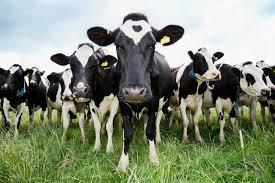
The ‘Cows eat grass, don’t they?’ project is a social sciences project exploring the future of grass-based, higher input and indoor dairy systems in the UK and Ireland. The project runs from 2018-2021 and is funded by the British Academy. 19 interviews were carried out with people working in the dairy industry in Ireland, including 11 from industry, 4 from academia, 1 from an NGO and 3 from government. 19 interviews with dairy farmers in Leinster and Munster were carried out. 26 industry documents were analysed.
Results on Irish dairy expansion, power structures within the grass-based system and work life balance:
- Most interviewees were optimistic and positive about expansion and supportive of the grass-based system.
- But low milk prices and unequal power structures mean expansion also isn’t fully seen as a choice for farmers.
- This can create stress and a feeling of lack of control over their own farm and their place in the industry.
- In addition, farmers feel like public debate is turning against them in relation to the environment and animal welfare.
- This can also create stress and a feeling of lack of control over the public narrative about the work they do.
- Ideally, farmers would like higher milk prices and more control over the public and industry conditions they work within.
- Expansion had differing impacts on work life balance – beneficial for some, not for others.
- When they expanded some people were able to hire more labour and reduce their own workload. Others worked extra hours to manage the increase in cow numbers.
- Farmers wanted work life balance to be valued better in the industry and by other farmers.
- Working hard was traditionally seen as part of being a ‘good farmer’.
- More emphasis within the industry on the importance of a good work life balance would help restore some feeling of control and align the direction of the industry with what farmers want for their own working life.
- Creating shared values around not working long hours is useful but at the same time doesn’t solve problems around structural inequality and the financial and time pressures farmers are under.
Short video about the results here.